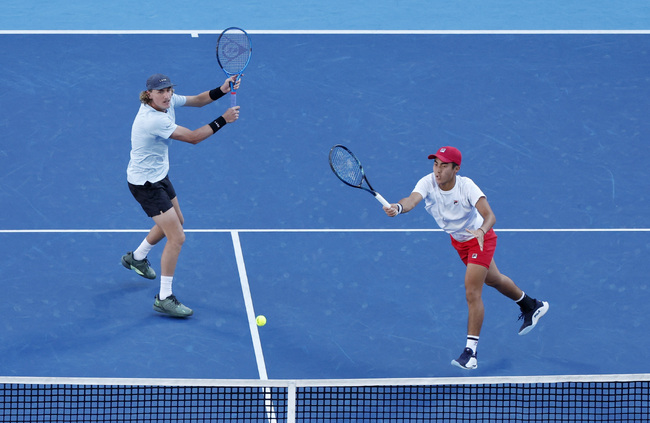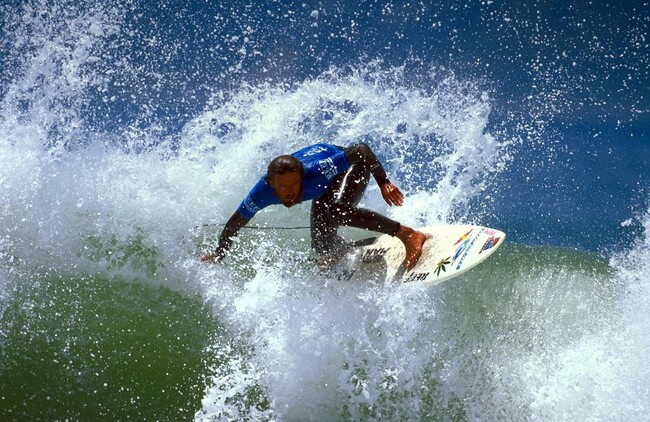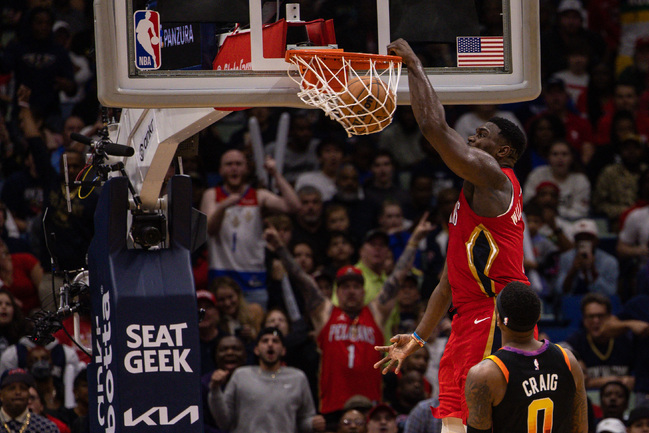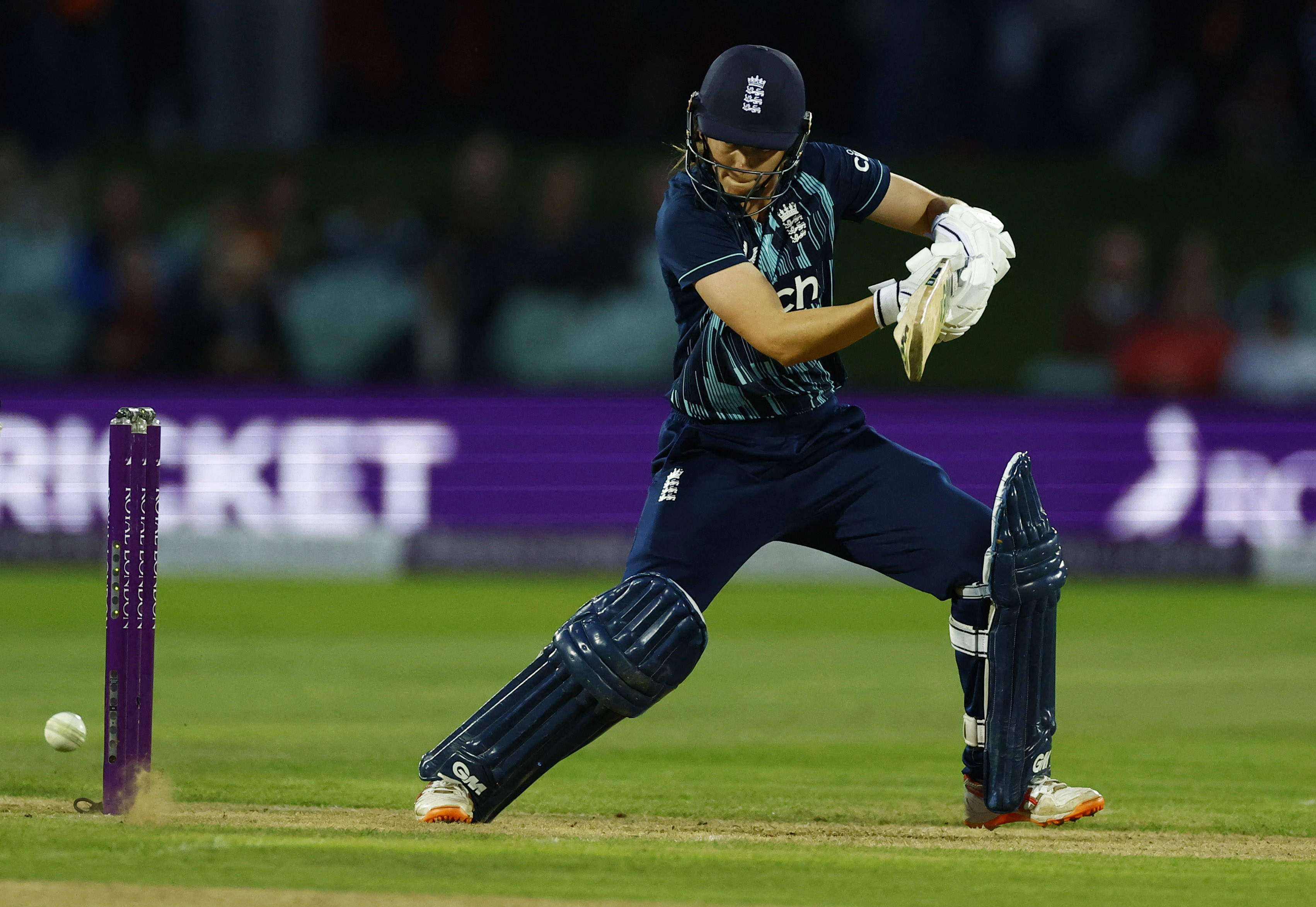Serratus Anterior and Overhead Athletes: Part II - Rehab Regimen
In the second part of this two-part series, Chris Mallac highlights some clinically relevant exercises designed to retrain serratus anterior function.
Team GB beach volleyball player Victoria Palmer trains at Sandbanks Beach following the outbreak of the coronavirus disease, Britain, May 20, 2020. REUTERS/Matthew Childs
Overhead athletes need stable shoulders. Their power and performance come directly from the stability and mobility offered in this joint. As reviewed in part I of this series, the serratus anterior (SA) helps stabilize the shoulder and supports the smaller muscles that surround the joint.
Serratus Anterior Exercises
Much research has been conducted on finding the best rehabilitation exercises for the SA. Most of these studies look at movements such as pushups, pushup-plus exercises, and cable and dumbbell punch-type movements. These exercises essentially emulate the function of the SA in its protraction role. Some of the findings of the more noted studies are:
- Decker et al. (1999) looked at the EMG activity and applied resistance associated with eight scapulohumeral exercises performed below shoulder height that target the SA muscle and how to design a continuum of SA muscle exercises for progressive rehabilitation or training(1). According to these researchers, the best exercises are the pushups, dynamic hug, scaption, and SA punch exercises.
- Barreto et al. (2012) found high levels of activation of the SA in scaption exercises and adequate levels of activation of SA in the modified military press (MMP)(2).
- Kim et al. (2014) studied the interesting effect of vibration on SA activation. They found that the pushup plus exercise performed using the Redcord system with mechanical vibration at 50 Hz increases SA muscle activity(3).
- Park and Yoo (2011) evaluated the effect of an unstable surface on the upper and lower parts of the SA while performing variations of the pushup exercise (pushup and pushup plus)(4). The results indicated that the different parts of SA have distinct functions in the stabilization process and, therefore, are recruited differently. The authors concluded that the main role of the lower SA is the fixation of the scapula onto the thoracic wall and, thus, recommend performing the pushup plus on an unstable surface as a more effective strategy for the selective mobilization of this component of the SA.
- Seo et al. (2013) also found that the performance of a push-up and knee push-up on an unstable surface (Swiss ball) increased activation of the SA(5).
Below are some examples of clinically used SA activation exercises that recruit SA to high levels of function:
The wall slider (see figures 1a and 1b)
- Using a foam roller or pool noodle on the wall, place the wrists against the roller so that the forearm commences in a neutral pronation/supination position. The hands are approximately six inches apart, and the elbows are about twelve inches apart.
- Protract the scapula so that the space between the shoulder blades is filled in with increased thoracic kyphosis.
- Slowly flex the shoulder so the roller moves up the wall. This creates a scapula upward rotation.
- As the shoulder flexes, slowly supinate the forearms. This then creates obligatory shoulder external rotation.
- Reach as high as possible into shoulder flexion.
- Although the feet do not move, the trunk gently leans into the wall as the arms are raised in shoulder flexion.
- The finish point is when the little fingers touch, and the forearm is in maximum supination.
- This should be felt as a strong serratus anterior contraction on the ribcage wall.
- Slowly descend and return to the starting point with the forearms in neutral pronation/supination.
- Perform three sets of ten repetitions.
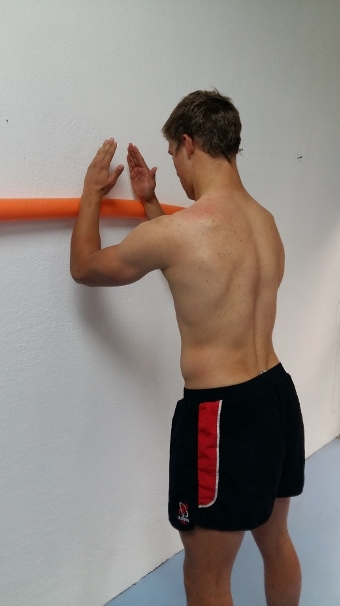
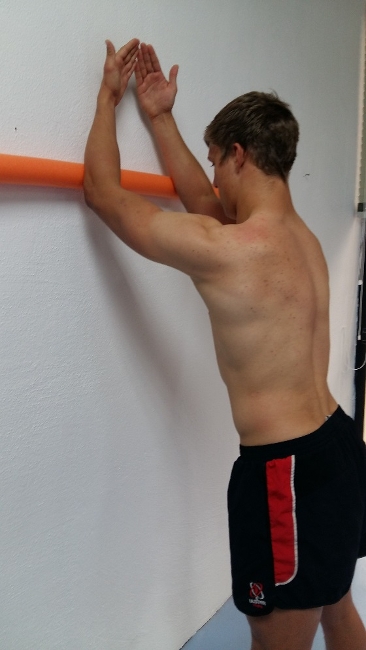
Figure 1a & 1b: Wall slider: start position (left) and finish position (right). Notice the forearm is supinated and the shoulder externally rotated.
Swiss ball rotations (see figure 2)
- Hold a Swiss ball (55cm) between the arms, gently resting on the chest and forearms in neutral pronation/supination.
- Slowly rotate the trunk to the left. As this is done, the right arm is made longer by actively protracting the scapula, and the left arm is made shorter by actively retracting and depressing the scapula. The arms ‘glide’ around the Swiss ball.
- As the arm is made longer (protraction), slowly rotate the palm upwards to encourage supination of the forearm and external rotation of the shoulder.
- Return to the start position and repeat.
- Progress by holding Theratubing in the hands, which wraps around the upper trunk. The tubing provides resistance to the scapula protraction.
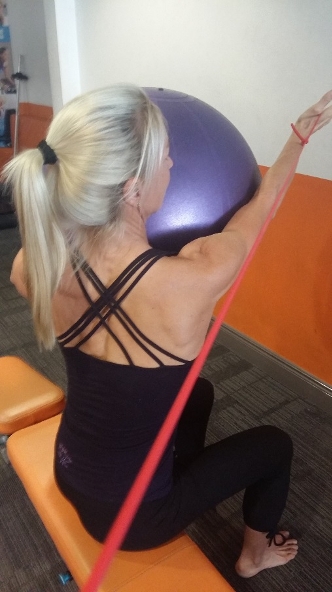
Figure 2: Swiss ball rotations. Notice the hand is turning into supination.
TRX Serratus rollouts (see figures 3a and 3b)
-
- Place the forearms through the loops of a TRX or other suspension device.
- Place the straps at wrist level for a high-load exercise or just below the elbows for a shorter lever low-load exercise.
- The commencing hand position is similar to the wall slider above. The hands are approximately six inches apart, and the elbows are about twelve inches apart.
- Slowly flex the shoulder so that the arms elevate above the head, and, at the same time, start to slowly externally rotate the shoulder by supinating the forearms.
- The finish point is when maximum flexion/elevation is achieved, and the little fingers touch.
- Although the feet do not move, the trunk will start to lean forward as the arms are raised.
- This finish position involves maximum scapula upward rotation.
- Return to the start and perform three sets of fifteen repetitions.
- This is a progression on the wall slider, as the suspension device is inherently unstable and requires more muscular effort throughout the kinetic chain to control.

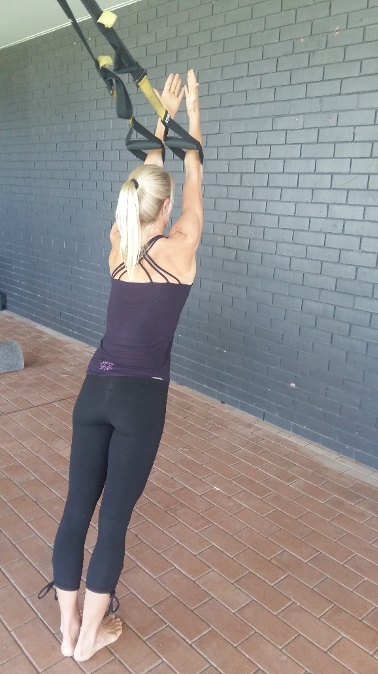
Figure 3a & 3b: TRX Serratus rollout (start position). Start position (left) and finish position (right).
TRX push-up plus (see figures 4a and 4b)
-
- On a TRX, position the handles two to three feet off the ground. The lower the handles, the more difficult the exercise.
- Holding the handles in a push-up position, slowly perform a push-up and slowly ‘screw’ the hands into supination and shoulder external rotation.
- At the top of the movement, protract the scapula and fill the space between the shoulder blades with a slight thoracic kyphosis.
- This is a progression from a push-up plus, as the TRX is unstable and requires more kinetic chain muscular effort.
- Return to the bottom position and perform three sets of ten repetitions.
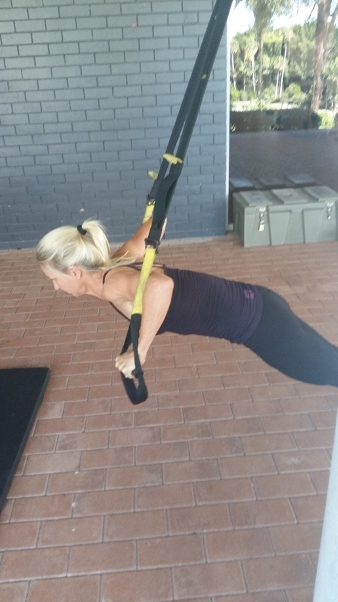
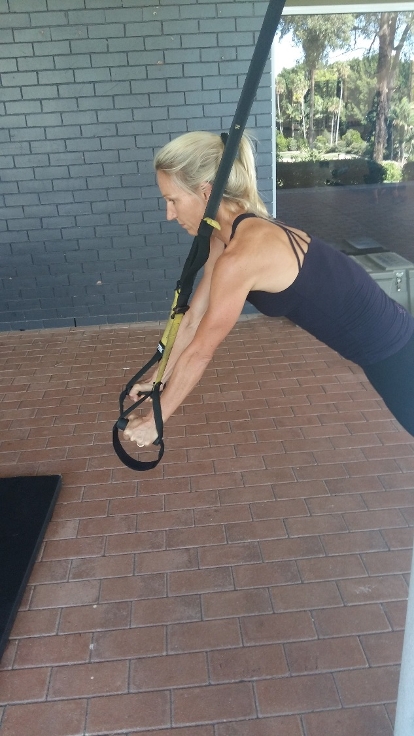
Figure 4a & 4b: TRX push-up plus. Push-up plus start position (left) and finish position (right).
Summary
The serratus anterior plays an important role in the dynamic movement and control of the scapula during pushing movements and overhead elevation. Specifically, it protracts, upwardly rotates, posteriorly tilts, and fixes the scapula against the rib cage during movement. It is an important muscle for the overhead athlete, as dysfunction in this muscle can lead to shoulder injuries such as impingement, rotator cuff breakdown, and performance decrements during overhead tasks.
References
- Am J Sports Med 1999. Vol. 27, No. 6. 784-791
- ConScientiae Saúde 2012. 11 (4) 660-667
- Phys. Ther 2014. Sci. 26: 1275–1276
- J Electromyogr Kinesiol. 2011 Oct;21(5):861-7
- J Phys Ther Sci. 2013 Jul;25(7):833-7
You need to be logged in to continue reading.
Please register for limited access or take a 30-day risk-free trial of Sports Injury Bulletin to experience the full benefits of a subscription. TAKE A RISK-FREE TRIAL
TAKE A RISK-FREE TRIAL
Newsletter Sign Up
Subscriber Testimonials
Dr. Alexandra Fandetti-Robin, Back & Body Chiropractic
Elspeth Cowell MSCh DpodM SRCh HCPC reg
William Hunter, Nuffield Health
Newsletter Sign Up
Coaches Testimonials
Dr. Alexandra Fandetti-Robin, Back & Body Chiropractic
Elspeth Cowell MSCh DpodM SRCh HCPC reg
William Hunter, Nuffield Health
Be at the leading edge of sports injury management
Our international team of qualified experts (see above) spend hours poring over scores of technical journals and medical papers that even the most interested professionals don't have time to read.
For 17 years, we've helped hard-working physiotherapists and sports professionals like you, overwhelmed by the vast amount of new research, bring science to their treatment. Sports Injury Bulletin is the ideal resource for practitioners too busy to cull through all the monthly journals to find meaningful and applicable studies.
*includes 3 coaching manuals
Get Inspired
All the latest techniques and approaches
Sports Injury Bulletin brings together a worldwide panel of experts – including physiotherapists, doctors, researchers and sports scientists. Together we deliver everything you need to help your clients avoid – or recover as quickly as possible from – injuries.
We strip away the scientific jargon and deliver you easy-to-follow training exercises, nutrition tips, psychological strategies and recovery programmes and exercises in plain English.






